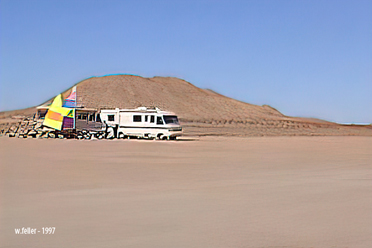El Mirage
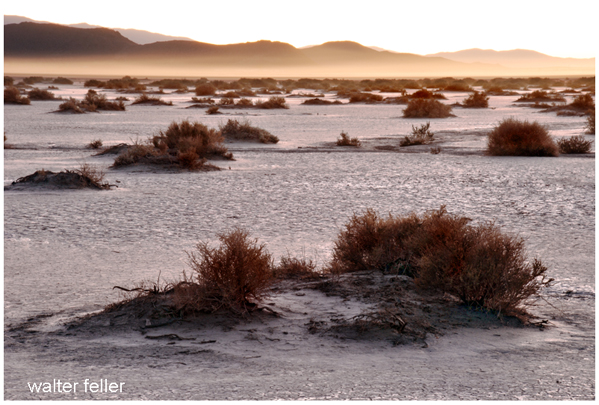
El Mirage Dry Lake is in the Mojave Desert in San Bernardino County, California. It is a prominent natural area with both recreational and ecological significance. The lakebed lies at 2,840 feet above sea level in the Antelope Valley. This old lake bed has been flattened over time into a hard-surfaced, flat area that can be used for many purposes; it is a lovely place for nature-based recreation.
The lakebed is a flat area that forms where water does not drain. This is where silt and clay build up during rare rainstorms. When it dries out, the surface becomes smooth and hard. This smooth surface makes it great for land speed racing, OHVs, land sailing, and even as a location for some of Hollywood's movies. The area also has nearby Shadow Mountains and Twin Hills, rough land for skilled riders, and quiet places to camp.
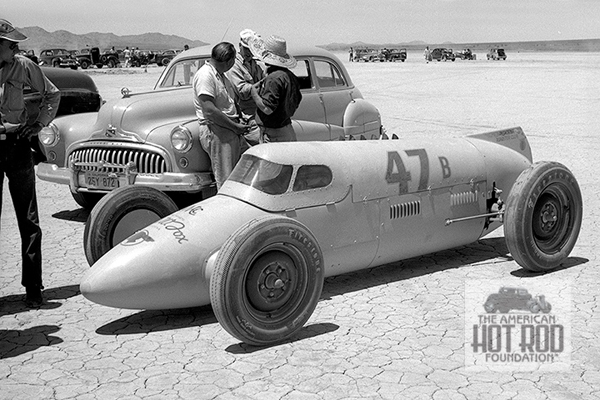
May 1949
El Mirage has a typical desert climate, with little rain- 4-6 inches annually-and temperatures between 55 and 70 degrees Fahrenheit. It hosts a few plants, such as creosote bushes and Joshua trees, to help maintain a fragile desert ecosystem. Sometimes, during wet times, migratory birds stop by, showing the importance of this area for ecology.
Administered by the Bureau of Land Management, El Mirage balances recreation for humans with conservation. Set aside regulations ensure that natural beauty is preserved while accommodating popular activities. Visitors have to abide by rules: keeping campsites away from the center of the lakebed and not visiting when it's wet to preserve it.
El Mirage Dry Lake is not just a fun place to visit but a sign of the Mojave Desert's wild beauty. With its flat, dry land and sharp mountain tops, this unique spot provides excitement, peace, and a lesson in how nature can survive in tough conditions.
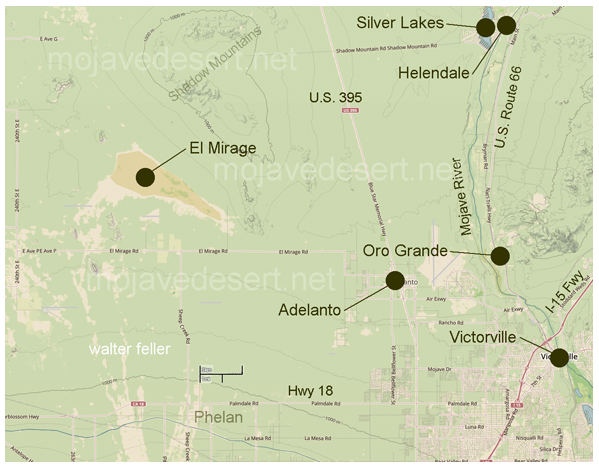
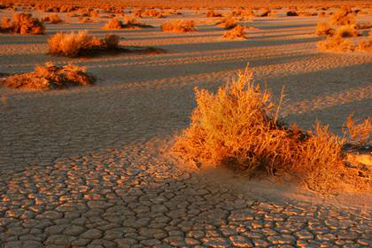


El Mirage photo gallery
Dry Lake Formation
Joshua tree
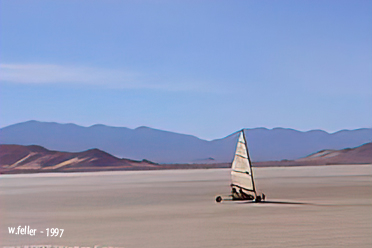
 Ford Model A - Motor Trend 1948
Ford Model A - Motor Trend 1948
